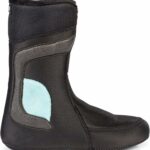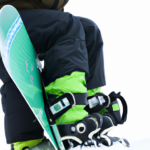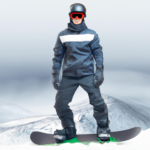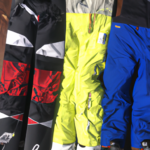Picture yourself speeding downhill on a snowboard, the cool wind in your face, and the serene landscape all around you. As thrilling as snowboarding can be, it requires suitable attire to ensure a comfortable experience. Socks are one of the most essential yet often overlooked aspects of snowboarding gear. In this article, you’ll learn what materials to look for, the importance of fit, and the specific brands that professionals recommend to keep your feet warm and dry while you’re ripping up the slopes.

Understanding the importance of right socks for snowboarding
Snowboarding can be one of the most thrilling winter sports out there, but it can also be pretty challenging, especially if you’re not properly equipped. It’s not just about the right board or the right shoes; something as simple as your socks can drastically impact your experience.
Welcoming comfort and warmth
The right pair of socks keeps your feet warm and comfortable throughout your snowboarding journey. If your feet are too cold, your muscles could become stiff, limiting your flexibility, and causing discomfort or even pain. The right pair of socks prevents this, ensuring you have an enjoyable snowboarding experience.
Preventing foot and boot problems
When you’re snowboarding, you’re susceptible to blister formation due to the friction between your feet and your boots. The right pair of socks helps minimize this friction, reducing your chances of having blisters, thus protecting your feet.
Enhancing your snowboarding experience
With the right socks keeping your feet comfy and safe from problems, you get to focus on enjoying your ride. Not worrying about discomfort or potential injuries allows you to better engage in and improve your snowboarding skills.
What to avoid: Cotton socks
While cotton socks might seem like a comfortable and affordable choice, they are typically not suitable for snowboarding.
Reasons why cotton socks are not suitable
The issue with cotton socks is that they absorb sweat but take a long time to dry, leaving your feet wet and cold. This wetness can produce discomfort, reduce your mobility, and even lead to hypothermia in extreme cold conditions.
Understanding the danger of cold and damp feet
Cold and damp feet can lead to a myriad of problems, from decreased performance to physical harm like trench foot. Trench foot, or immersion foot syndrome, is a painful and potentially serious condition caused by prolonged exposure to wet and cold conditions.
Sharing experiences from veteran snowboarders
Many veteran snowboarders share experiences of unpleasant runs or even unfortunate accidents due to wearing the wrong type of socks, with cotton ones frequently mentioned. Their experiences serve as a reminder that something small like socks can significantly affect your snowboarding experience.
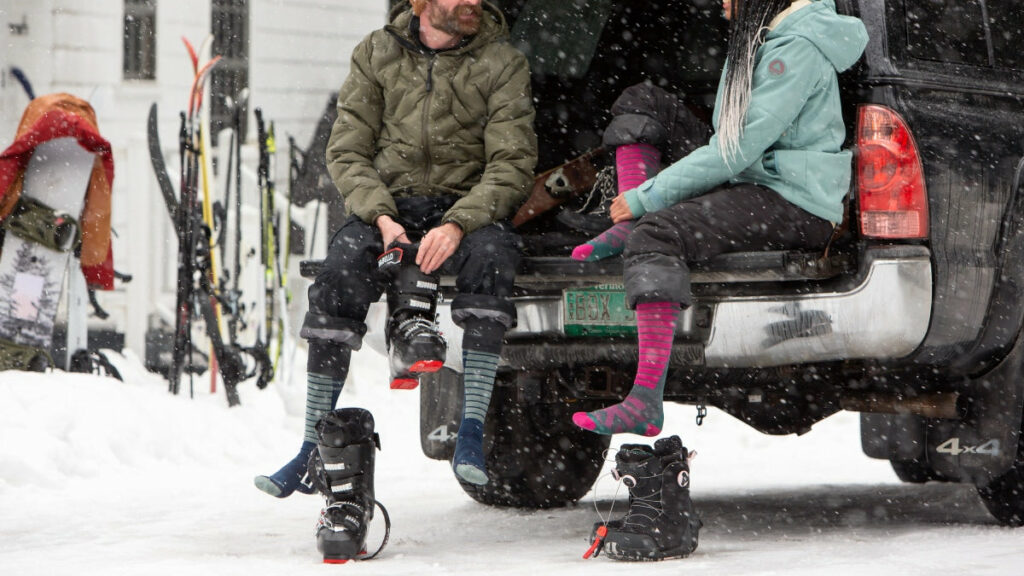
Ideal materials for snowboarding socks
Snowboarding socks come in various materials, each with their own benefits and drawbacks. Some of these materials include merino wool and synthetic materials like polyester.
Introduction to Merino wool socks
Merino wool is a natural fiber known for its excellent insulation and moisture-wicking properties. It’s softer than traditional wool, making it comfortable to wear for long periods.
Synthetic material socks: Pros and cons
Synthetic materials such as polyester, nylon, or a blend are also used in snowboarding socks. While these materials generally provide good insulation and moisture wicking, they may not be as comfortable or breathable as merino wool.
Innovations in snowboarding sock materials
Recent innovations have introduced materials such as bamboo or compression fabric in socks. These materials aim to offer superior moisture control, comfort, and improved circulation, among other benefits.
Why Merino wool socks are preferred for snowboarding
Despite the various choices, merino wool socks remain a popular choice among snowboarders.
Merino wool socks for warmth and comfort
Merino wool has exceptional insulation properties. It maintains its warmth even when wet, ensuring your feet stay warm during your snowboarding run. It’s also softer and less itchy than regular wool, offering great comfort.
Merino wool socks for superior moisture wicking
One of the best things about merino wool is its excellent moisture-wicking capacities. It can keep sweat away from your skin, preventing dampness and maintaining dry comfort while you are snowboarding.
Sustainable and long-lasting – the merino advantage
Merino wool is renewable and biodegradable, making it a sustainable choice. It is also durable and can endure the rough conditions of snowboarding, lasting you multiple seasons.

Understanding the role of sock thickness in snowboarding
The thickness of your socks can also affect your comfort and performance in snowboarding.
General perception about thicker socks
You might think that the thicker your socks, the warmer they will be. While this is partially true, overly thick socks can cause a tight fit with your boots, leading to discomfort and reduced blood circulation.
Insights on the relation between sock thickness and insulation
The thickness of the sock doesn’t necessarily equate to better thermal insulation. The insulation properties of a sock come more from the materials used than the thickness.
Why some prefer thin socks for snowboarding
Some snowboarders prefer thin socks as they provide a better boot fit, help wick away moisture more efficiently, and avoid pressure points or any restriction in blood flow, which can be caused by thicker socks in tight boots.
Snowboarding-specific socks features
Snowboarding-specific socks come with several features to enhance your experience and performance.
Padding: Where should it be?
You can find snowboarding socks with padding in the shin and calf areas for improved comfort and protection. Additional cushioning in the heels and toes can also help absorb shock, reduce the chances of blisters, and enhance comfort.
Exploring the technology behind snowboarding socks
Many snowboarding socks have specific designs or technologies to improve their effectiveness. For instance, some socks employ seamless construction to minimize friction points, while others include ventilation zones for increased breathability.
Why traces of Lycra or Spandex can be your friend
A small percentage of Lycra or Spandex in your socks helps them maintain their shape, gives a secure fit, and prevents them from slipping or bunching up.

Snowboarding Socks for different weather conditions
Different types of snowboarding socks are suitable for different weather conditions.
Invest in a winter tuned sock for subzero temperatures
For harsh sub-zero temperatures, it’s worth investing in winter-tuned socks with excellent insulating properties. These socks will keep your feet warm even in the coldest conditions.
Looking at mid-season socks
Mid-season socks offer a balance of insulation and breathability, making them suitable for average winter conditions.
Socks for spring slush conditions
For warm, spring snowboarding conditions, you might want to consider thinner, highly breathable socks that can keep your feet dry and cool.
Health and hygiene consideration while choosing socks for snowboarding
Choosing the right socks isn’t just about performance but also about maintaining healthy feet.
Importance of changing socks after each day of riding
Changing your socks every day makes sure your feet stay fresh and free from bacteria, reducing your chances of getting infections.
Dealing with foot sweating
Your feet can understandably sweat a lot during a day of snowboarding. Wearing socks with good moisture-wicking abilities can help keep your feet dry and comfortable, reducing the risk of bacterial or fungal infections.
Ignoring foot hygiene can lead to infections
Ignoring foot hygiene can lead to various infections such as athlete’s foot. It’s important to let your feet breathe and dry out properly after snowboarding and to wash your socks after each use.
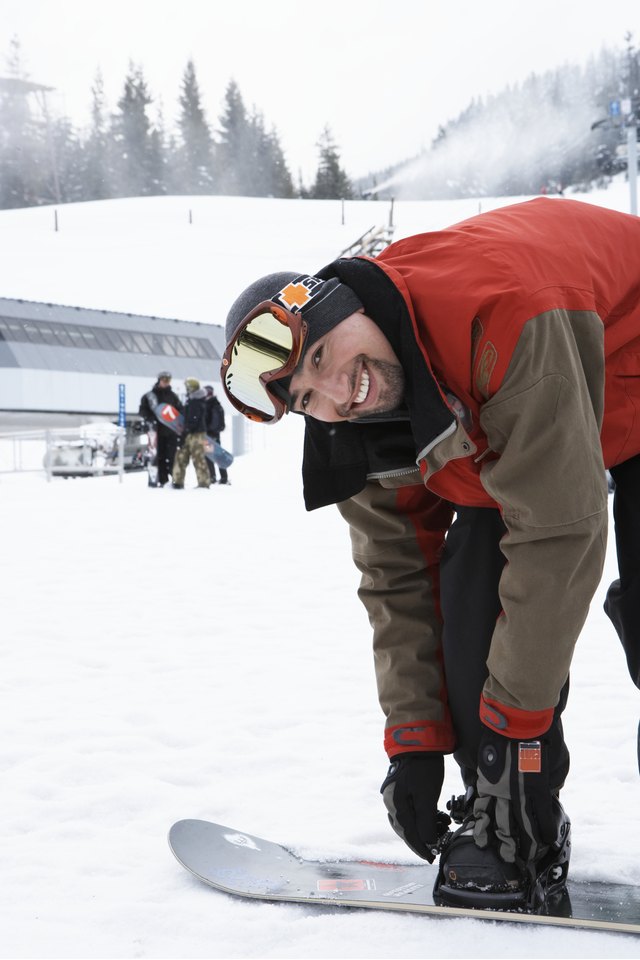
Popular snowboarding sock brands
In terms of brands, some stand out more than others in the industry of snowboarding socks.
Reviewing Smartwool snowboarding socks
Smartwool is a popular brand known for its high-quality merino wool socks. Their socks offer great insulation, comfort, and durability.
Darn Tough: Are they really?
Darn Tough, while slightly pricier, offers a lifetime warranty. These socks are known for their durability, comfort, and impressive performance in multiple weather conditions.
Why Burton’s snowboarding socks are a favorite
Burton is a well-known name in the snowboarding industry, and their socks live up to the hype. They offer a good balance of warmth, comfort, and durability, making them a favorite among many snowboarders.
Conclusion: Investing in the right pair of snowboarding socks
Choosing the right pair of snowboarding socks can significantly enhance your outdoor winter experience.
Summary of the important factors to consider
When choosing your snowboarding socks, remember to consider the material, thickness, and any snowboarding-specific features they offer. Your socks must provide good insulation, moisture-wicking, and comfort while fitting perfectly with your boots.
Reiterating the importance of not compromising on socks quality
It’s important not to compromise on quality when it comes to snowboarding socks. A good pair of socks can protect your feet, provide comfort, and enhance your performance on the slopes.
Encouraging reader to take the first step to enhance their snowboarding experience
Investing in top-quality snowboarding socks is investing in your comfort, performance, and overall enjoyment of the sport. You will experience the benefits on every run, whether you’re a seasoned pro or a passionate amateur. Go ahead, take that step, and make your snowboarding experience even better.
- What Snowboard Bindings Should I Get? - January 23, 2024
- What Size Screws For Snowboard Bindings? - January 23, 2024
- How To Snowmobile On Water? - January 23, 2024

